Meet the World Class Cyclist Who Biked 1,200 Miles of Jungle to Shoot Her Film
Here's how small team of filmmakers followed one of the world's toughest athletes into the Southeast Asian jungle to film 'Blood Road.'

If you think making a first feature is hard, try making a first feature in the jungle. On dirt bikes. For 153 days. That was the challenge that Nicholas Schrunk faced when he partnered with world-class cyclist Rebecca Rusch to document her ride along the Ho Chi Minh trail. Rusch is one of the greatest ultra-endurance mountain bikers in the world—affectionately called "The Queen of Pain"—and Schrunk would have to learn to keep up.
As a long-time Red Bull athlete, Rusch had approached the company with an idea: to ride the 1,200 miles of the Ho Chi Minh trail. It was an endurance ride with an emotional propulsion; Rusch's father was a U.S. Air Force pilot, shot down over the trail during the Vietnam war, his death among the thousands that inspired the trail's nickname, "Blood Road." Rusch was on a mission to find his site and be there on the anniversary of this death.
She partnered with Red Bull Media House and their creative director Nicholas Schrunk to film her trek. The resulting documentary, Blood Road, is an emotional journey of self-discovery that has all the grit and tension you'd expect from a great sports film, with the added bonus of thrillingly beautiful photography of a rarely documented terrain.
No Film School had a chance to talk with Schrunk and Rusch about their incredible adventure. They told us about transporting days' worth of gear on motorbike, drinking local whiskey, and dropping a RED camera out of the sky.
No Film School: I want to start with Rebecca. From watching the film, it seems like you're a very private person. Why did you want to tell this story on camera?
Rebecca Rusch: You read into that. I am a very private person. I spend a lot of time alone on my bicycle, and grew up with my mom at work all the time. I maybe don't communicate a ton, and definitely spend a lot of time in my own head. I didn't go to Red Bull with this project thinking, 'I really want to make a movie.' I went to Red Bull with this idea as a collaboration because I knew the project was too big for me to do alone—the logistics of trying to figure out access in each country and trying to figure out how to map the trail—so I really went to Red Bull more as a resource. Instead of telling their athletes what to do, they ask us, 'what do you want to do?' And really push us to pitch projects and think of ideas. I think when Nicholas and the rest of Red Bull Media House started to see how deep the story was, they felt like they really needed to make the film.
So yeah, I didn't set out to make a film. I really wanted to do the ride, and I knew I needed help on it. But I think what was special about our small crew, and having a them on motorcycles going through the physical experience with me, is that I didn't really think about them as a camera crew, we just experienced it together. I wasn't necessarily conscious that there were cameras around all the time. Especially in the really important moments in the film, I don't remember the crew being there. I think that speaks highly of Nicholas and the team's understanding that if they made a noise, it was going to be distracting for me.
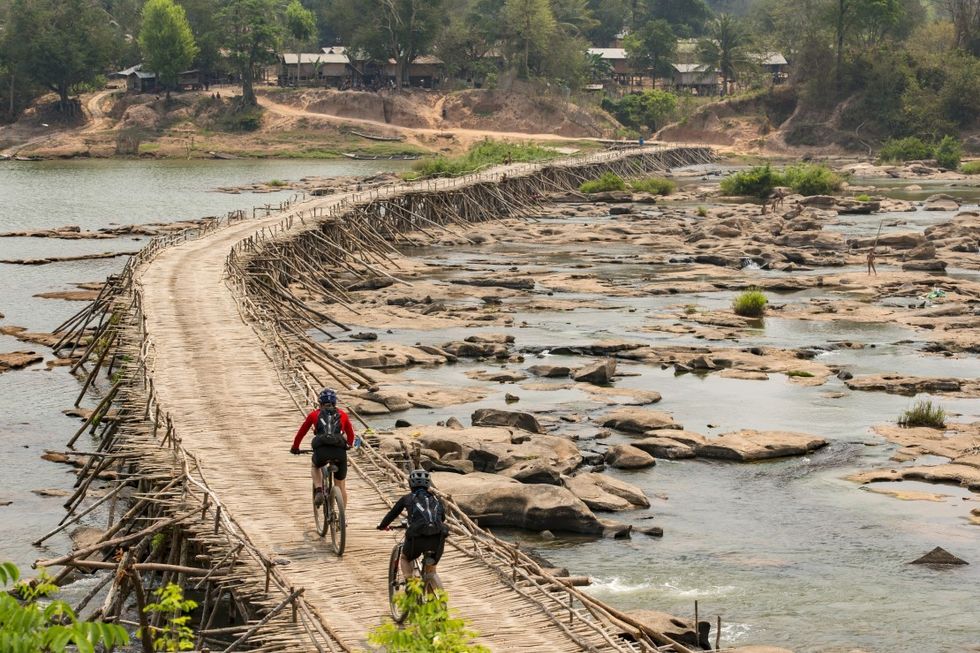
NFS: You mentioned working closely together in prep even before Nicholas went over to scout. What was that collaboration like?
Nicholas Schrunk: A lot of the collaboration at the beginning was understanding what it would take to tell this great story on camera, but to be honest the bigger learning was not on the camera side, but learning what it would take for her to actually do this. Pragmatically, we had to figure how both parties would exist in the same space, and how we could best do it at Rebecca's speed. We weren't going to miss important parts of the story because we weren't able to keep up. We solved that problem by scouting. Once we knew where Rebecca was going on the trail, myself, the producer and the DP went over there and combed over South East Asia for months, so we could know where we were shooting, where we could charge batteries, and really build a plan that would allow Rebecca to move as quickly and freely as possible.
Rusch: The collaboration was so important, and as amazing as it was, it was not without challenges. I think Nicholas would probably agree that the first few days of the trail, we were all trying to figure out how to work together. A lot of us were strangers so it took some time to get into each other's rhythms. Ultimately, we all wanted the same thing but we had different jobs, and once I figured that out, it all gelled.
"We had to have all of our production team traveling on dirt bikes, and moving at the pace of one of the world's best endurance athletes."
NFS: Nicholas, can you go more into how you pulled off a production in this crazy terrain while keeping pace with Rebecca?
Schrunk: As [Rebecca] mentioned, because of the nature of the trail, we had to have all of our production team traveling on dirt bikes, and moving at the pace of one of the world's best endurance athletes. So in looking for crew, they had to not only be film professionals but also skilled motocross athletes. And going into pre-production, it was this hyper specific thing of figuring out how you move these people around. So when we were scouting we used a couple key tools to ensure that everything would be as efficient as possible; Artemis, the iPhone app, which allows you to frame up your shots; a Garmin GPS, which allowed us to record shooting locations; and then Sun Seeker, another iPhone app.
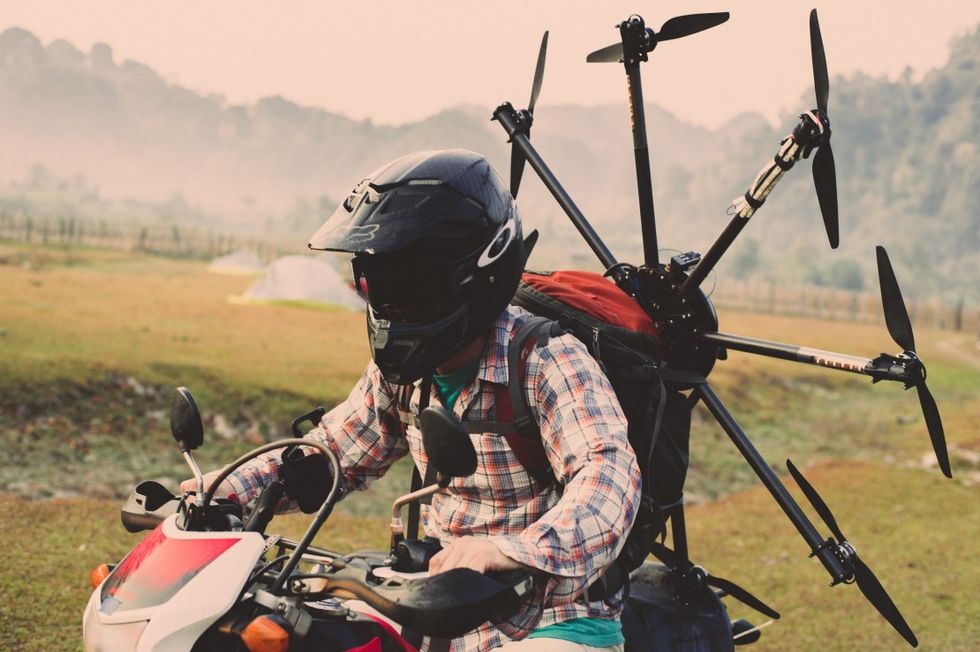
What we would do is put together a whole shooting plan of where the light would be at the times we wanted, and because we were all on dirt bikes, some of us were keeping track of Rebecca, and some people were leap frogging ahead to try to set up a shot, and whenever the spur of the moment story happened, someone would try to get there. We ended up with essentially a GPS cheat-sheet (because every bike had a Garmin GPS), so it was loaded with specific coordinates and images that were already framed up with what lens, what camera format, and what to shoot. So when life happened and the plan changed, essentially the entire team had a plan for where to go and could act autonomously. And I can get into camera too if you like...
NFS: Please. You shot on RED Dragons right, as well as GoPros?
Schrunk: Yeah, so the RED Dragon 6K was the camera that we used, the other formats were GoPro Hero 4 Blacks, and a Sony D7S for some specific lowlight shots and then on a follow up shoot we had the RED Weapon 6K. And we shot the whole thing anamorphic with Cooke Anamorphic i lenses.
"We actually crashed one of the RED Dragons out of the sky on a drone and it still worked."
NFS: And why did you choose those formats?
Schrunk: We chose the RED Dragon 6K because we needed a high resolution. We only had prime lenses, and generally speaking, you want zoom lenses when you're shooting doc because you want to be able to recompose your frame. But the zoom lens wasn't the storytelling aesthetic that we wanted. So when we were doing all of our testing, we knew we needed a camera that was lightweight and durable, and that had no compromises in the look and feel of it, but we also need something with a high enough resolution so that if we wanted to push in on a shot in post, we could. The Dragons checked those boxes for us. They are incredibly lightweight and durable. We actually crashed one of them out of the sky on a drone and it still worked.
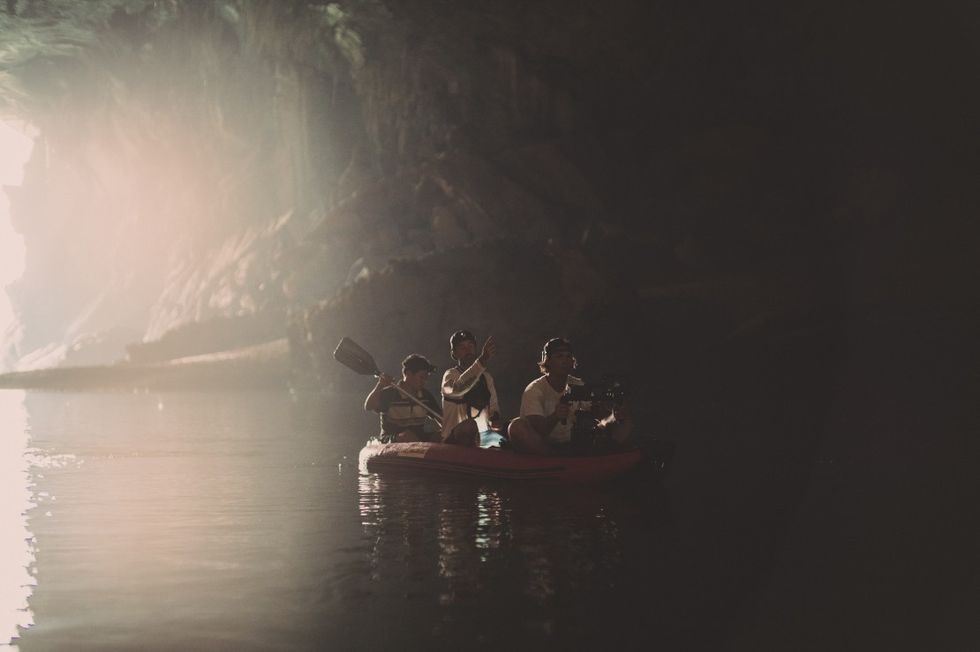
NFS: I want to pull it back to one of the themes in the film, which is the current goodwill that you found between South East Asians and Americans; you draw a nice contrast between now and the tensions of the Vietnam war. But I'm curious to know if you ran into any resistance in the process of making your film, political, interpersonal or otherwise.
Schrunk: One of our concerns was definitely, 'will we be welcomed there?' As you pointed out, the history is quite violent and muddied, and even though time has passed, my assumption was that we would encounter some type of animosity. But in our experience, everyone was incredibly open and gracious with us. We did do a lot of education along the trail, both with getting the right permissions through the government and the correct agencies, but also with PR educating people on the story we were telling, who Rebecca is, and why we were there. What we found was that everyone empathized with Rebecca's story and wanted to help us, both on the production side and also throughout the actual expedition.
Rusch: I had the same experience. I think the crew going over there ahead of time and sitting with the villagers was really essential. It takes a lot of time, you don't just walk into a village and make a movie. I know they spent a ton of time drinking the local whiskey and building relationships that were really important to being able to have access. Also, as much as we learned from the people living there, I think they also learned from us that we were coming in humbly with no ill intention. So it was definitely relationship-building in a broader sense, not just for the benefit of making a beautiful film but also for the benefit of the continued forgiveness and recovery that still needs to happen in those places.
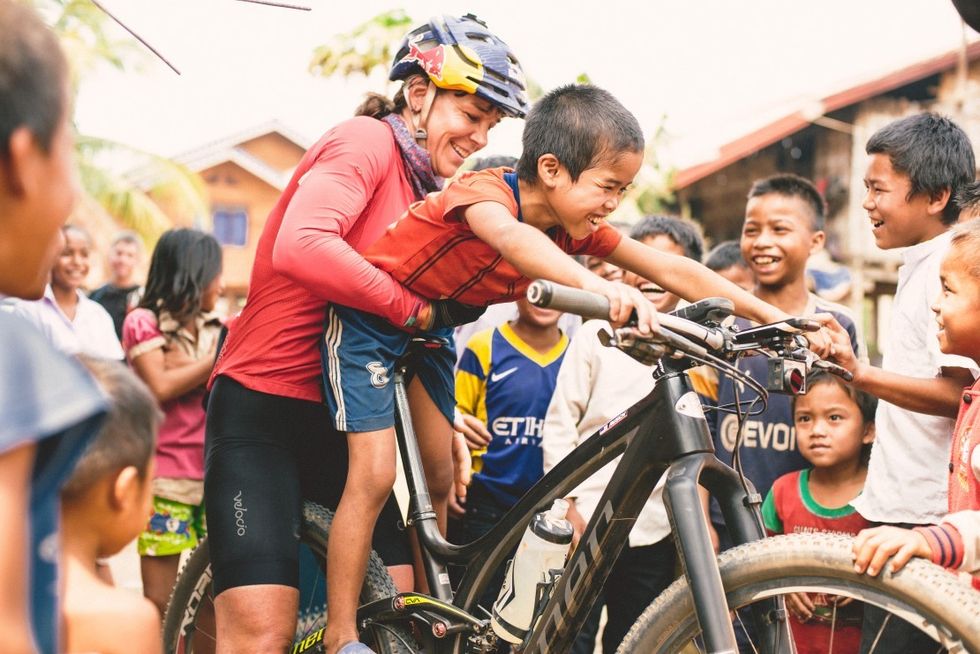
NFS: Over the course of the film, Rebecca, you go through what seems like an unexpected transformation. Despite knowing everything that you could know about the trip and planning it for years, you couldn't quite expect the emotional journey that you had, and I'm just wondering if there is an additional aspect to that documenting it on film and collaborating in post and seeing the trip from another perspective.
Rusch: That's a really intuitive question and you're exactly right. The ride is over but the journey is far from done. Especially reading some of [Vietnamese riding partner] Huyen [Nguyen]'s translations; in the edit, that's the first time I knew what she was really thinking. She spoke some English but we couldn't express many of those deeper thoughts to each other. Also, our memory is never as good as what is captured in real life. Nicholas asked Huyen and myself to journal the whole time, and that was a really great exercise for me that I probably wouldn't have done in the same capacity if it hadn't been assigned to me. I'm really grateful for that.
And the evolution is that it's become far bigger than just my ride, my journey, and my dad's story. Hearing how people are reacting, we all knew it was a great story, but I've been really surprised at how it touches people, whether it's a 16-year-old girl who has no obvious connection to the Vietnam war, or a veteran who's never talked about his experience before. Watching the power that telling the story can have makes me feel really proud of the work that we've done.
On June 20, Blood Road will be available as a digital download in 4K through Vimeo On Demand, or in HD and SD on iTunes, Amazon, Vimeo On Demand, and Google Play. A 3-In-1 Collector's Edition of Blood Road including the film on Blu-Ray, DVD and a Digital Download will be available at The Red Bull Shop US.
The featured BTS clip is one of three episodes on the making of Blood Road. The full series will release in July on Red Bull’s youtube channel and is included in the DVD extras.

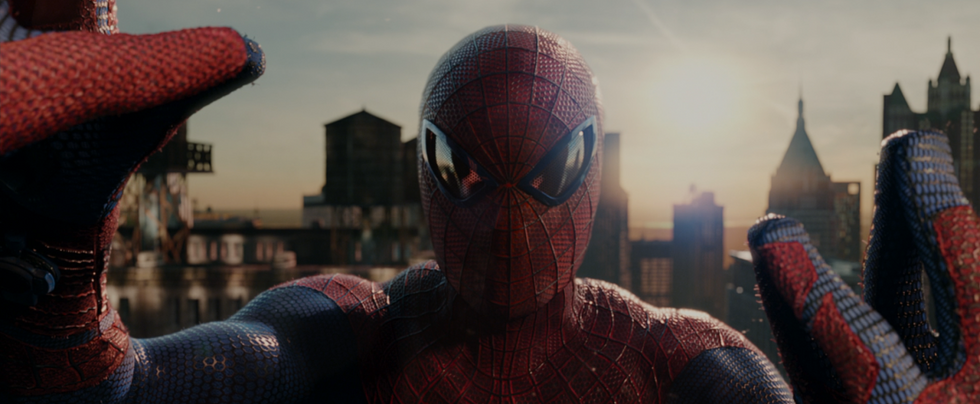 'The Amazing Spider-Man' (2012)
'The Amazing Spider-Man' (2012)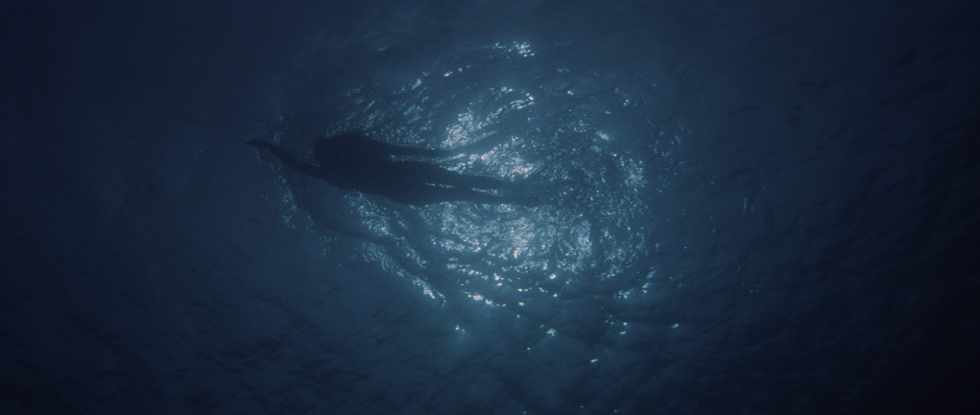 'Jaws' (1975)
'Jaws' (1975)









